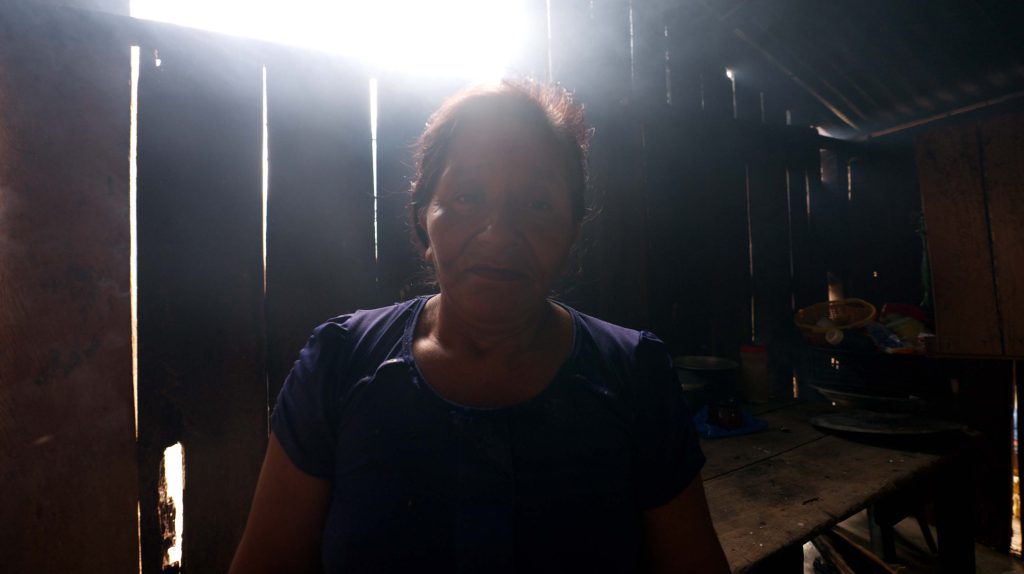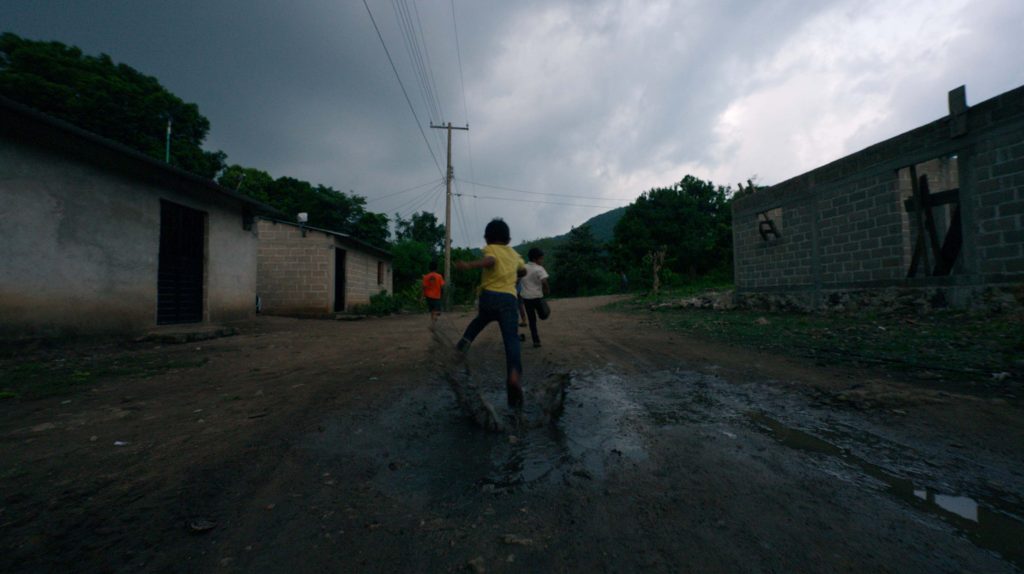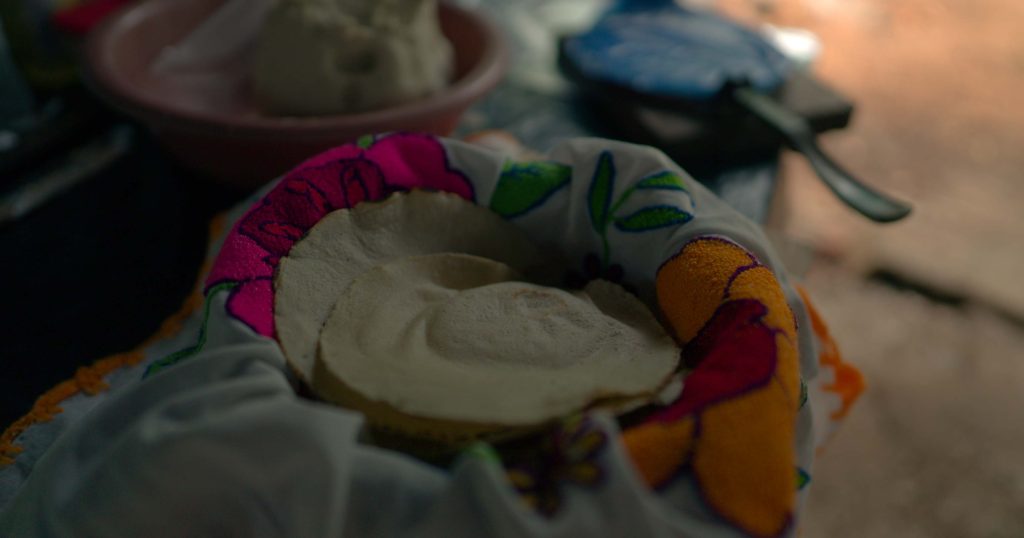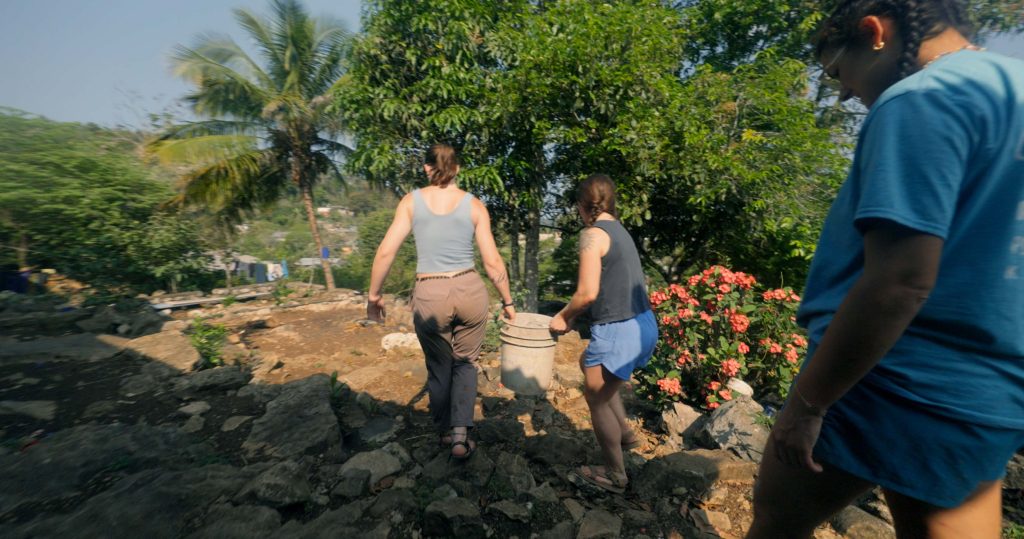The Problem with Traditional Cooking Methods: AN in-depth Look
November 14, 2023 | Nahua Expeditions
Traditional cooking methods in many rural areas rely heavily on open fire stoves. While these methods are deeply rooted in cultural practices and have been used for generations, they come with significant and often devastating health and environmental consequences.
Quick Facts about Traditional Cooking Methods:
- Health Impact: Cooking over open fires indoors exposes families to harmful pollutants equivalent to smoking several packs of cigarettes per day, leading to respiratory infections and chronic diseases.
- Environmental Toll: Traditional cooking methods contribute to deforestation, soil erosion, and disrupt the water cycle, exacerbating climate change and reducing biodiversity.
- Economic and Social Burden: Women and children spend significant time collecting firewood, limiting educational and economic opportunities and causing physical strain.
- Cultural Significance: Cooking over open fires is deeply rooted in cultural practices, but transitioning to sustainable cookstoves can preserve traditions while improving health and environmental outcomes.
- Solution: Sustainable brick stoves reduce smoke exposure, lessen firewood demand by up to 60%, and promote healthier, more sustainable living in rural communities.

Health Impacts
The most immediate and severe impact of open fire cooking is on health. When families cook on open fires indoors, they are exposed to high levels of smoke and harmful pollutants. The World Health Organization estimates that exposure to household air pollution from cooking with solid fuels causes approximately 4 million premature deaths annually, primarily among women and children in developing countries. This pollution includes fine particulate matter, carbon monoxide, and other toxins that can lead to a range of health issues:
- Respiratory Infections: Children exposed to smoke from cooking fires are particularly vulnerable to acute respiratory infections, including pneumonia, which is a leading cause of death in children under five. Respiratory infections, particularly acute respiratory infections (ARIs) such as pneumonia, are a significant health consequence of traditional open fire cooking methods. The constant exposure to smoke filled with fine particulate matter and toxic gases compromises the respiratory system, making individuals, especially young children, highly susceptible to infections. These pollutants irritate the airways and lungs, leading to inflammation and a weakened immune response, which makes it easier for bacteria and viruses to cause infections. Pneumonia, a severe lung infection, remains one of the leading causes of death in children under five in these regions. The chronic exposure to harmful smoke also increases the risk of other severe respiratory conditions, such as tuberculosis, further exacerbating the health crisis faced by families who rely on open fire stoves for their daily cooking needs.
- Chronic Respiratory Diseases: Long-term exposure to smoke can lead to chronic obstructive pulmonary disease (COPD), which includes conditions such as chronic bronchitis and emphysema. Chronic respiratory diseases are a serious and long-term consequence of continuous exposure to the smoke produced by traditional open fire cooking. The fine particulate matter and toxic gases emitted during burning wood or other biomass fuels penetrate deep into the lungs, causing chronic inflammation and damage to the respiratory system. This persistent irritation can lead to conditions such as chronic obstructive pulmonary disease (COPD), which encompasses chronic bronchitis and emphysema, characterized by persistent respiratory symptoms and airflow limitation. Individuals with COPD experience symptoms like chronic cough, shortness of breath, and wheezing, which progressively worsen over time. Moreover, chronic exposure to indoor smoke can also contribute to the development of asthma, increasing the frequency and severity of asthma attacks. These chronic respiratory conditions significantly diminish the quality of life, reducing physical capacity and productivity, and often leading to premature death if not managed effectively.
- Cardiovascular Diseases: Inhalation of fine particulate matter can increase the risk of heart disease, high blood pressure, and stroke. Cardiovascular diseases are another grave consequence of prolonged exposure to the pollutants released by traditional open fire cooking methods. The fine particulate matter (PM2.5) found in smoke can enter the bloodstream through the lungs, causing systemic inflammation and oxidative stress. This inflammation can damage blood vessels, leading to atherosclerosis, where arteries become narrowed and hardened. Over time, this increases the risk of hypertension (high blood pressure), heart attacks, and strokes. Studies have shown that the exposure to high levels of indoor air pollution significantly elevates the risk of ischemic heart disease and other cardiovascular conditions. Additionally, chronic exposure can exacerbate pre-existing heart conditions, compounding the health challenges faced by individuals in rural communities. By reducing smoke exposure through the adoption of sustainable cookstoves, we can significantly lower the incidence of cardiovascular diseases, improving overall heart health and longevity in these populations.
- Eye Irritation and Disease: The smoke from open fires can cause chronic eye irritation, leading to conditions such as cataracts, which are a leading cause of blindness. Eye irritation and disease are common yet often overlooked health issues resulting from traditional open fire cooking methods. The smoke produced by burning wood and other biomass fuels contains a variety of irritants that can cause immediate and chronic eye discomfort. Exposure to these irritants can lead to symptoms such as redness, itching, and tearing. Over time, the constant exposure to smoke can cause more serious conditions like chronic conjunctivitis, which is the persistent inflammation of the outermost layer of the eye and the inner surface of the eyelids. Moreover, long-term exposure to smoke increases the risk of developing cataracts, a condition where the eye’s lens becomes cloudy, leading to blurred vision and potentially blindness if left untreated. Cataracts are a leading cause of blindness in many developing countries, and the risk is significantly higher among individuals regularly exposed to indoor smoke from open fires. Reducing smoke exposure through the use of sustainable cookstoves can drastically improve eye health and prevent the development of these debilitating conditions, enhancing the quality of life for those in affected communities.

Environmental Impacts
The environmental toll of traditional cooking methods is equally alarming. The need for constant firewood to fuel these stoves contributes to deforestation, which has far-reaching consequences:
- Deforestation: Trees are cut down at an unsustainable rate to meet the demand for firewood. This deforestation leads to the loss of biodiversity, disruption of ecosystems, and the degradation of soil quality. Deforestation is a critical environmental impact directly linked to the traditional practice of open fire cooking. In many rural areas, families rely heavily on wood as their primary fuel source, leading to the widespread cutting down of trees. This unsustainable harvesting of firewood contributes to the rapid depletion of forest resources. Trees play a crucial role in maintaining ecological balance; they absorb carbon dioxide, provide habitats for wildlife, and help regulate water cycles. The loss of forests not only disrupts these vital functions but also accelerates soil erosion, reduces biodiversity, and impairs water quality. The absence of trees leads to degraded land, which can no longer support agriculture effectively, thereby threatening local food security. Additionally, deforestation contributes significantly to climate change, as fewer trees are available to sequester carbon, and the burning of wood releases stored carbon back into the atmosphere. By adopting sustainable cookstoves that require significantly less firewood, we can mitigate deforestation, preserving these vital ecosystems and promoting a more sustainable and healthy environment.
- Climate Change: The burning of wood releases carbon dioxide, a greenhouse gas that contributes to global warming. Additionally, deforestation reduces the number of trees that can absorb carbon dioxide from the atmosphere, exacerbating climate change. Climate change is profoundly exacerbated by the traditional open fire cooking methods widely used in rural areas. Burning wood and other biomass fuels releases significant amounts of carbon dioxide and other greenhouse gases, such as methane and black carbon, into the atmosphere. These emissions contribute to the greenhouse effect, trapping heat and causing global temperatures to rise. Black carbon, in particular, is a potent short-lived climate pollutant that has a severe impact on the climate, contributing to rapid ice melt in polar regions and altering weather patterns globally. The deforestation driven by the need for firewood further compounds this issue, as fewer trees are available to absorb carbon dioxide, reducing the planet’s capacity to mitigate these emissions. Sustainable cookstoves drastically reduce the amount of wood needed for cooking, thereby cutting down on the associated carbon emissions and alleviating the pressure on forest resources. By adopting these cleaner technologies, we can significantly reduce the carbon footprint of rural communities, contributing to global efforts to combat climate change and protect our planet for future generations.
- Soil Erosion: Without trees to anchor the soil, areas subjected to deforestation often experience increased soil erosion. This can lead to reduced agricultural productivity and further environmental degradation. Soil erosion is a significant environmental consequence of the traditional open fire cooking practices that lead to widespread deforestation. When trees are cut down for firewood, the protective canopy and root systems that hold the soil in place are removed. This loss of vegetation leaves the soil vulnerable to the elements, particularly wind and rain, which can easily wash or blow the topsoil away. Topsoil is the most fertile layer, rich in nutrients necessary for plant growth, and its erosion can lead to reduced agricultural productivity, threatening food security for local communities. Additionally, soil erosion can cause sedimentation in rivers and streams, disrupting aquatic ecosystems and reducing water quality. The degradation of land through erosion can lead to the formation of gullies and the loss of arable land, further exacerbating poverty and hardship in rural areas. By implementing sustainable cookstoves that require less firewood, we can help preserve forest cover, maintain soil integrity, and promote sustainable land use practices that protect the environment and support local livelihoods.
- Water Cycle Disruption: Trees play a critical role in the water cycle by facilitating the infiltration of rainwater into the ground. Deforestation can disrupt this process, leading to altered water flow patterns and affecting local water supplies. Water cycle disruption is another critical environmental issue resulting from the deforestation driven by traditional open fire cooking practices. Trees play a vital role in the water cycle through processes such as transpiration, where they release water vapor into the atmosphere, and by aiding in the infiltration of water into the soil. When forests are cleared for firewood, these essential processes are disrupted. The absence of trees reduces the amount of water vapor entering the atmosphere, leading to decreased rainfall and altering local and regional weather patterns. Furthermore, without tree roots to help absorb and retain water, the soil’s capacity to hold moisture diminishes, increasing surface runoff and reducing groundwater recharge. This can lead to more frequent and severe droughts, negatively impacting agriculture and water availability for local communities. The increased runoff also exacerbates soil erosion and can lead to flooding during heavy rains. By promoting the use of sustainable cookstoves that require less wood, we can reduce deforestation and help maintain the natural water cycle, ensuring a more stable and resilient environment for future generations.

Economic and Social Impacts
The time and effort required to collect firewood have significant economic and social repercussions:
- Time Consumption: Women and children often bear the burden of collecting firewood, spending hours each day on this task. This is time that could be spent on education, economic activities, or other productive endeavors. Time consumption is a significant economic and social impact of traditional open fire cooking methods. Gathering firewood is a time-intensive task, often falling to women and children, who must spend hours each day walking long distances to collect sufficient fuel. This arduous chore not only limits the time available for other productive activities, such as education, income-generating work, or community engagement, but also poses safety risks. By adopting sustainable cookstoves, which require significantly less wood, families can reclaim this valuable time, empowering women and children to pursue educational and economic opportunities, thereby enhancing overall community well-being and development.
- Physical Burden: Carrying heavy loads of firewood over long distances can lead to physical strain and injury, particularly for women and children. The physical burden associated with traditional open fire cooking methods is considerable, particularly for women and children who are primarily responsible for gathering firewood and cooking meals. Carrying heavy loads of firewood over long distances can lead to musculoskeletal injuries and chronic pain, affecting physical health and well-being. The constant exposure to smoke during cooking also poses significant health risks, contributing to respiratory infections and other ailments. Sustainable cookstoves alleviate this physical burden by reducing the need for frequent trips to collect firewood and by channeling smoke away from the cooking area, thereby improving the health and safety of individuals, particularly women and children, in rural communities. By promoting the adoption of these cleaner and more efficient technologies, we aim to alleviate physical hardships and enhance the quality of life for those impacted by traditional cooking practices.
- Economic Costs: In areas where firewood must be purchased, the cost can be a significant financial burden for low-income families, diverting resources from other essential needs. The economic cost of traditional open fire cooking methods extends beyond the direct expenses associated with purchasing or collecting firewood. It encompasses broader financial implications for households and communities. Families often spend a significant portion of their income on fuel for cooking, diverting resources that could otherwise be used for essential needs such as food, education, or healthcare. Moreover, the time-intensive nature of gathering firewood reduces productivity and limits opportunities for income-generating activities. Sustainable cookstoves offer a cost-effective solution by reducing the amount of fuel required for cooking. This not only lowers household expenditures on firewood but also frees up time and resources that can be redirected towards economic development initiatives. By investing in cleaner and more efficient cooking technologies, we can mitigate the economic burden associated with traditional methods and promote sustainable livelihoods in rural communities.

The Cultural Dimension
While the health and environmental impacts are critical, it’s also important to recognize the cultural significance of traditional cooking methods. For many communities, cooking over an open fire is a social and cultural practice deeply intertwined with their identity. Any solution must therefore be culturally sensitive and respectful, providing alternatives that meet the community’s needs while addressing the associated health and environmental issues. The cultural dimension of traditional cooking methods encompasses deep-rooted practices, rituals, and social dynamics that are integral to community identity and cohesion. Cooking over open fires has been a tradition passed down through generations, shaping culinary traditions and cultural practices. It often serves as a communal activity where family members and neighbors gather around the hearth to prepare meals, share stories, and strengthen social bonds. However, while these traditions hold cultural significance, they also come with inherent challenges, particularly concerning health and environmental impacts. The transition to sustainable cookstoves presents an opportunity to preserve cultural heritage while addressing these challenges. By integrating local knowledge and traditions into the design and implementation of clean cooking technologies, we can ensure that cultural practices are respected and sustained. Furthermore, promoting sustainable cooking practices can empower communities to adapt traditional practices in ways that support health, environmental stewardship, and resilience in the face of modern challenges. This holistic approach honors cultural diversity while fostering positive change for future generations.
By addressing the multifaceted problems associated with traditional cooking methods, our sustainable brick stove initiative not only improves health outcomes and environmental sustainability but also empowers communities economically and socially. It’s a comprehensive approach to solving a deeply rooted issue, paving the way for a healthier and more sustainable future.
Quick Facts about Traditional Cooking Methods:
- Health Impact: Cooking over open fires indoors exposes families to harmful pollutants equivalent to smoking several packs of cigarettes per day, leading to respiratory infections and chronic diseases.
- Environmental Toll: Traditional cooking methods contribute to deforestation, soil erosion, and disrupt the water cycle, exacerbating climate change and reducing biodiversity.
- Economic and Social Burden: Women and children spend significant time collecting firewood, limiting educational and economic opportunities and causing physical strain.
- Cultural Significance: Cooking over open fires is deeply rooted in cultural practices, but transitioning to sustainable cookstoves can preserve traditions while improving health and environmental outcomes.
- Solution: Sustainable brick stoves reduce smoke exposure, lessen firewood demand by up to 60%, and promote healthier, more sustainable living in rural communities.

Join Us in Making a Difference
The success of our sustainable brick stove initiative is a powerful reminder of what can be achieved when communities come together for a common cause. Here at Nahua Expeditions, your participation in our trips fuels the resources needed for these critical conservation efforts. By joining us, you are directly contributing to the health and sustainability of the rural communities, which in turn, drastically improve and protect the ecosystems you will visit. We invite you to be part of this journey. Whether through traveling with us, donating, volunteering, or spreading the word, your support is crucial in building a healthier, more sustainable future for these unique and delicate regions.
